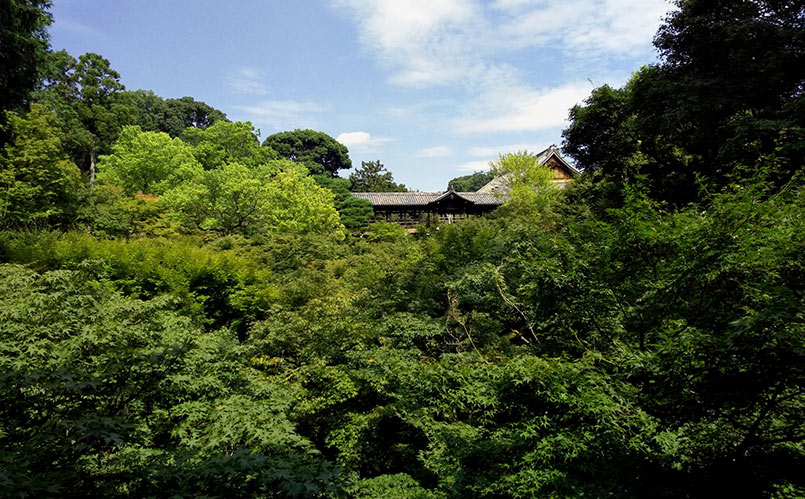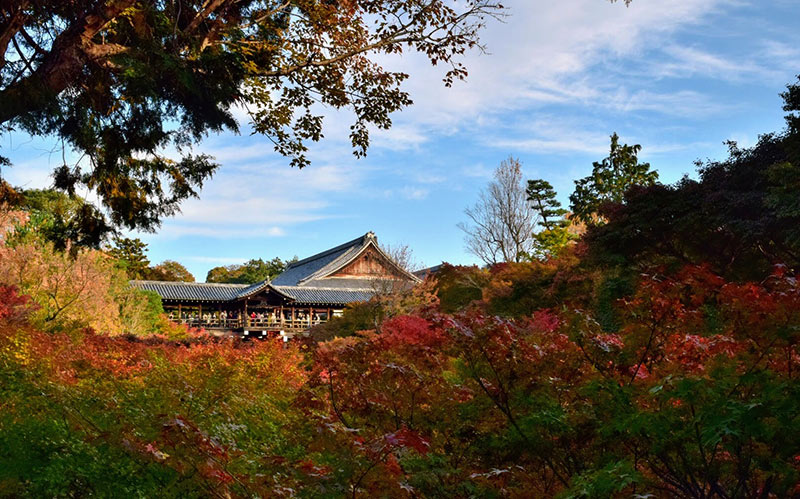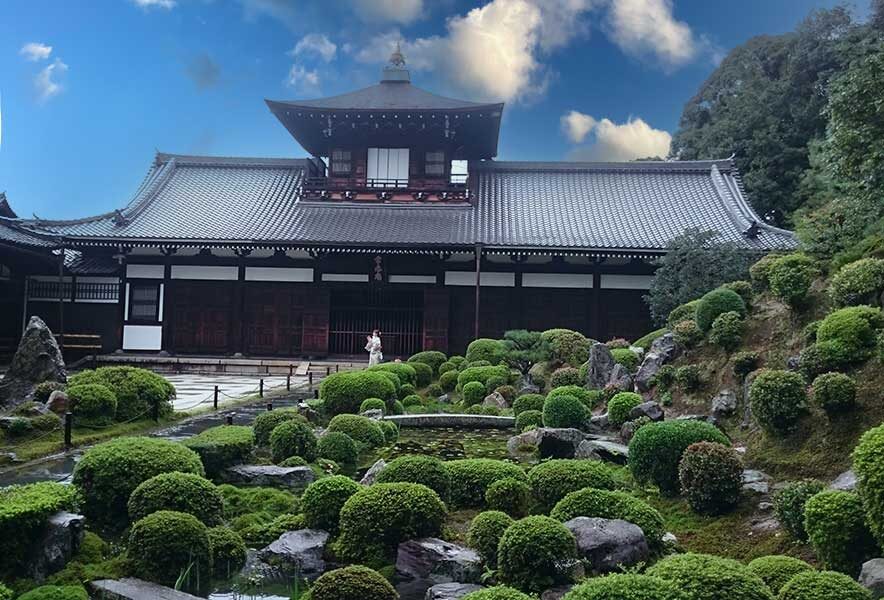- What kind of temple is Tofukuji? One of the five temples of Kyoto
- What is on the grounds of Toufukuji? One of the largest Zen temples in Japan, with many national treasures and important artifacts!
- Toufukuji Temple is famous for its autumn foliage! Toumyoji’s three famous bridges and the autumn leaves!
- Access to Tofukuji Temple
- Parking around Tofukuji Temple
- Tofukuji Temple Official Website
- Recommended around Tofukuji Temple
What kind of temple is Tofukuji? One of the five temples of Kyoto
Tofukuji Temple is the head temple of the Tofukuji School of the Rinzai Sect of Zen Buddhism, located in Higashiyama-ku, Kyoto City.
Its official name is “Tofuku Zenji Temple,” and it is said that the Chinese characters for “Tofuku” were taken from the two largest temples in Nara, Todaiji and Kofukuji.
Construction of the temple began in 1236 by the regent Kujo Doie (whose son was the fourth shogun of the Kamakura Shogunate, Fujiwara no Yoritsune) and was completed in 1255.
The first abbot was the Zen monk Ennin, who had returned to Japan after completing his training in the Song Dynasty.
In 1334 (the first year of the Kemmu Era), it was listed as one of the five temples of Kyoto, and received protection from the shoguns of the Muromachi and Edo shoguns. At its peak, the temple had more than 70 pagodas on its grounds, making it the largest Zen temple in Kyoto.
Kyoto Gozan: The five temples of the Rinzai sect of Zen Buddhism in Kyoto, as finally defined by Ashikaga Yoshimitsu in 1386. Tofukuji Temple is ranked fourth.
Tacho: A small temple located within the precincts of the main temple. A “tacho” is a small temple located within the precincts of the main temple, and includes “~in” and “~an”.
During the Meiji period (1868-1912), the main buildings were destroyed by fire due to the separation of Shintoism and Buddhism, and the Russo-Japanese War (1937-1945). The temple is now a treasure trove of national treasures and important cultural properties.
What is on the grounds of Toufukuji? One of the largest Zen temples in Japan, with many national treasures and important artifacts!
Although Tofukuji Temple was reduced in size during the Meiji period (1868-1912), it is still a large temple with 25 pagodas, and there are many national treasures and important cultural properties (* hereafter referred to as “important cultural properties”) within its precincts.
Among the buildings, the Sanmon Gate, rebuilt in 1425 by Shogun Ashikaga Yoshimochi (the oldest of the three gates of a Zen temple in Japan) is a National Treasure, while the Zendo, rebuilt in 1347 (the only Zen meditation hall in Japan remaining from the Middle Ages), Toji (the oldest toilet in Japan from the early Muromachi Period), and the Seiichi Toji (the oldest temple in Japan) are Important Cultural Properties. The temple has 18 buildings, including the “Zendo” (Japan’s only medieval zazen hall), the “Toji” (the oldest “toilet” in Japan, dating from the early Muromachi period), and the “Kaisandō,” dedicated to Seiichi Kokushi.
Other than the buildings, the National Treasures include a portrait of Enji’s teacher, Museki Shihan (painted in 1238), and a calligraphy calligraphy (penned in 1237, a proof of training given by his teacher), while the Important Cultural Properties include the main statue of Shakyamuni Buddha, a bronze bell said to have been cast in the early Heian period, and many other paintings, sculptures, crafts, and old documents.


Toufukuji Temple is famous for its autumn foliage! Toumyoji’s three famous bridges and the autumn leaves!
Tofukuji Temple is famous as a treasure house of national treasures and important cultural properties, and is also famous for its autumn foliage.
The “Tofukuji Sanmeibashi (three famous bridges)” are also recommended to see together with the autumn foliage.
Within the precincts of Tofukuji Temple, there is a ravine called Sengyokukan that crosses the temple from east to west. There are three bridges over the valley.
Gaunkyo 臥雲橋
Gaunjyo Bridge is the westernmost wooden bridge.
As the bridge is a public road, there is no admission fee, but it is very crowded during the autumn foliage season.
Tuutenkyo 通天橋
Tsutenkyo Bridge is the bridge in the center of the temple.
It is the bridge connecting the Hojo (abbot’s residence) and the Kaisandō Hall, and is the most beautiful bridge for viewing the autumn leaves.
Originally, the bridge was used for ascetic practices, and a fee is required to enter the temple.
Engetsukyo 偃月橋
Engetukyo Bridge is the easternmost wooden bridge.
It was built in 1603 and is designated as an important cultural property. It is also one of the 100 most famous bridges in Japan.
Access to Tofukuji Temple
778, Honmachi 15-chome, Higashiyama-ku, Kyoto 605-0981, Japan
Parking around Tofukuji Temple
Tofukuji Temple Official Website
Official site:https://tofukuji.jp/
